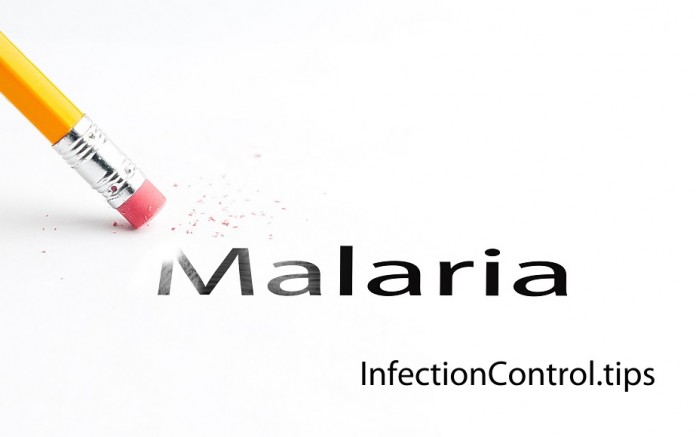Abstract:
Malaria is a deadly disease caused by parasites that mosquitoes transmit. It is responsible for hundreds of thousands of deaths each year. Effective chemical and pharmaceutical methods to control malaria do exist, however, in some areas, malaria has begun to become resistant to these control methods. Biotechnological advances in genetic engineering have lead some researchers to investigate whether or not genetically engineered mosquitoes can help control drug resistant malaria. While genetic engineering is not without challenges, perhaps it is the answer to the question of how to overcome drug resistant malaria and save lives.
Main Article:
Malaria is a deadly disease caused by Plasmodium parasites which are transmitted by female Anopheles mosquitoes1. About 3.2 million people are at risk of contracting malaria around the world, especially in Sub-Saharan Africa, where 89% of malaria cases and 91% of malaria deaths occur1. Though the global incidence of malaria has been decreasing, in 2015 97 countries and territories around the world had ongoing malaria transmission and there were more than 400,000 malaria deaths1.
Methods to prevent and treat malaria have been relatively successful, as evident by the decreasing malarial deaths. Vector control through insecticide-treated mosquito bednets and indoor residual spraying has helped decrease the presence of Anopheles mosquitoes1. Malaria is treatable with proper antimalarial drugs, benefitting the patient and helping prevent the spread of the parasite by decreasing the amount of parasites in the blood1. The problem with vector control and treatment of malaria is that many areas of the world are seeing insecticide and drug resistance. Mosquitoes are becoming resistant to the class of insecticides used in treated bednets, and improper malaria treatment with antimalarial medication has led to drug resistance in the Plasmodium parasite1. In essence, both the Anopheles mosquitoes and the Plasmodium parasite are showing resistance to the most commonly used chemical and pharmaceutical options to fight malaria.
many areas of the world are seeing insecticide and drug resistance
Continuing to develop new and stronger insecticides and antimalarial drugs may only be delaying inevitable resistance. The need for novel approaches to malaria control has lead researchers to look at genetic engineering as a potential long-term and permanent solution to insecticide and drug resistance. The Plasmodium parasite is totally dependent upon the mosquito for its complex life cycle2. Thus, interfering with the mosquito’s ability to support that life cycle can interrupt malaria transmission2. Changing the mosquito’s ability to support the life cycle of Plasmodium parasites can happen through genetic engineering of the mosquito gut, making it too hard for Plasmodium to survive, or genetic engineering to decrease the mosquito population.
There are a few ways to use genetic engineering to combat malaria through modification of the mosquito gut. One way is to genetically modify the Anopheles mosquito to make part of the mosquito’s gut, where the Plasmodium parasite normally grows, into an inhospitable habitat where Plasmodium can’t survive2. This means that the mosquitoes will need to have new “effector” genes introduced so they can be expressed as anti-Plasmodium proteins within the mosquito’s gut, making it too hard for the Plasmodium to survive2. Ideas for introducing the “effector” genes into the mosquito include using fungi or viruses that already infect mosquitoes or using bacterial symbionts that already inhabit the mosquito gut2.
A second way is to modify the symbiotic gut bacteria.2. When the mosquitoes encounter the modified bacteria while going about their lives in nature, the bacteria are introduced into the mosquito gut and begin expressing the anti-Plasmodium proteins, making the mosquito gut inhospitable to Plasmodium parasites.
Another method of genetic engineering to control malaria involves decreasing the mosquito population so there are fewer mosquitoes to transmit malaria. An example of a potential method has been successfully tested in Aedes mosquitoes to combat dengue3. The study done on Aedes mosquitoes for dengue control involved genetically modifying male mosquitoes so their offspring never matured, dying before they were able to transmit dengue3. The use of these transgenic “sterile” males resulted in a wild mosquito population decrease of 80-95%3. Of course, there may be challenges in replicating this study in Anopheles mosquitoes but the study does show that genetically engineering “sterile” mosquitoes can drastically decrease the mosquito population in an area.
There are certainly issues and challenges surrounding all of these methods of genetic engineering. Issues and challenges regarding genetically engineering the mosquitoes’ gut include: Plasmodium parasites developing resistance to the anti-Plasmodium genes; issues with getting the genes into the mosquitoes, bacteria or fungi; and issues with getting the modified bacteria or fungi into the mosquitoes2. Issues and challenges regarding genetically modifying mosquitoes to reproduce less include: breeding sufficient numbers of mosquitoes; releasing the mosquitoes in the right areas; and potential effects on the local ecosystem that may result from a large decrease in the mosquito population. Additionally, we must not forget the issue of getting the approval of the regulatory committees and the local population for genetically engineered mosquitoes/microorganisms to be released where they live2.
Drug resistant malaria is becoming an increasing problem for some areas of the world. Although there are still many unknowns, genetic engineering may be the answer.
References:
- World Health Organization. Media Center, Malaria. Accessed 2/10/2016. http://www.who.int/mediacentre/factsheets/fs094/en/
- Wang, S. & M. Jacobs-Lorena. 2013. Genetic approaches to interfere with malaria transmission by vector mosquito. Trends Biotechnol. 31(3): 185-193. DOI: 1016/j.tibtech.2013.01.001
- Carvalho, D.O., A.R. McKemey, L. Garziera, R. Lacroix, C.A. Donnelly, L. Alphey, A. Malavasi, & M. L. Capurro. 2015. Suppression of a field population of Aedes aegypti in Brazil by sustained release of transgenic male mosquitoes. PLoS Negl Trop Dis. 9(7): e000384. DOI: 1371/journal.pntd.0003864












